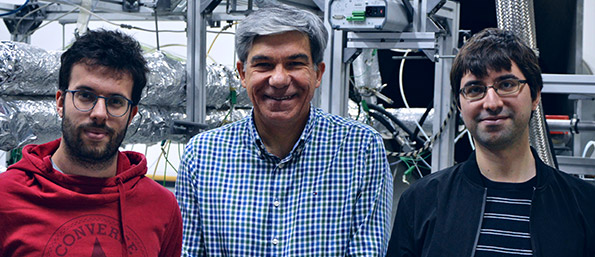Clean Sky 2
The UPV leads SACOC, the most ambitious community programme to achieve cleaner and more sustainable air transport
[ 20/05/2020 ]
The challenge to obtain cleaner and more sustainable air transport is leading the aeronautical industry to develop turbofan propulsion engines with ultra-high by-pass ratios, a type of engine that stands out for consuming less fuel and generating emissions that contaminate less, as well as being quieter. However, the installation and functioning of this type of engines represents several challenges from different points of view. In order to address these challenges, the SACOC project has been initiated, an international project headed by Valencia’s Polytechnic University which is framed within the Clean Sky 2 programme, a joint initiative of the Horizon 2020 programme and the European aeronautical industry.
“Clean Sky 2 is the most ambitious community programme to achieve cleaner and more sustainable air transport. In accordance with its commitment to tackle European transport challenges, the CMT-Thermal Engines Institute leads this international consortium to evaluate and improve aspects linked to the thermal management of turbofan engines,” highlights Alberto Broatch, researcher at the CMT-Thermal Engines Institute and project coordinator.
Less contaminating and more efficient aircrafts
One of the challenges that turbofan engine – or airbreathing jet engine – manufacturers are facing is the cooling system. In a turbofan with ultra-high by-pass ratio, or UHBR, the fan located at the entrance of the engine uses larger blades than usual. However, the rotation speed of the gas turbine that activates it is incompatible with the efficient operation of the fan. The coupling of both turbomachines therefore requires an intermediate gear case, which must be lubricated. “The working temperature of the lubricant is controlled by way of an exchanger that is cooled with air, which is installed in the engine’s secondary flow and uses the air supplied by the fan. The optimal design of this component requires a balance between efficacy, weight and permeability, in order to minimise the impact on the engine’s performance,” explains Alberto Broatch.
Wind tunnel at over 600 km/h
The project is focused on developing a methodology to optimise the oil exchangers in next-generation UHBR engines. “To achieve this objective, it is essential to combine both highly-reliable 3D computational simulations as well as experimental measures in a wind tunnel,” highlights Jorge García Tíscar, researcher at the CMT-Thermal Engines Institute.
To this end, a wind tunnel has been created at the UPV that can reach speeds of over 600 km/h, while at the same time accurately replicating the flow patterns that take place in a real engine. Next-generation experimental techniques will be used in this tunnel to characterise the thermal-aerodynamic capabilities of the developed prototypes, including, among other techniques, infrared thermography and laser-based velocimetry and vibrometry. The end objective of these tests is to guarantee the lubrication of future turbofan engines, considered one of the key pieces to achieve air transport that is more respectful towards the environment.
The Polytechnic University of Madrid and Purdue University (USA) are also taking part in the initiative, as well as French aviation engine manufacturer Safran.
As CMT-Thermal Engine researcher Andrés Felgueroso explains, “the experimental activities that the UPV takes part in are essential to guarantee the validity of numerical simulations conducted by the UPM and Safran".
With a duration of two years, the SACOC project will publish its conclusions in 2021.
Outstanding news
 ARWU 2023
ARWU 2023
The Shanghai ranking reaffirms the UPV as the best polytechnic in Spain for yet another year
 Science Meets Regions CV 2023
Science Meets Regions CV 2023
The UPV and the Almussafes City Council begin a collaboration in search of solutions to maintain the automobile sector in the Valencia Region
 Scientific reference
Scientific reference
Avelino Corma, Distinguished Research Assistant at the UPV, awarded an Honorary Doctorate by the University of Huelva
 Micronanofabs NTC UPV-PERTE CHIP Conference
Micronanofabs NTC UPV-PERTE CHIP Conference
María Marced, TSMC Europe president: "The sector's future is bright, the market is expected to double by 2030"
 Goya nomination
Goya nomination
Javier Polo, who holds a degree in Audiovisual Communication from the UPV, directs the successful short documentary Una terapia de mierda
 Sant Carles Medal 2023
Sant Carles Medal 2023
The Faculty of Fine Arts of the UPV awards the Sant Carles Medal 2023 to outstanding Valencian art and culture figures







